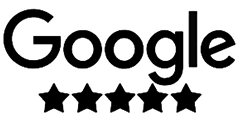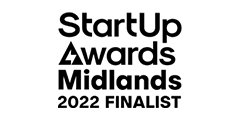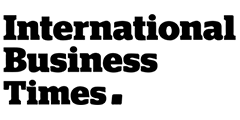Blog
In business relationships are often the backbone of success. We explore the nuances of navigating professional relationships, from the importance of first impressions to the intricacies of virtual professionalism.

September 9, 2024
By
Kamran Awan
Category
Individual
In the dynamic world of business, where relationships are often the backbone of success, mastering the art of business etiquette is crucial. Business etiquette encompasses a set of social norms and professional behaviours that facilitate positive interactions in the corporate sphere. In this blog, we'll explore the nuances of navigating professional relationships, from the importance of first impressions to the intricacies of virtual professionalism.
First impressions matter
Dressing appropriately
Your appearance speaks volumes before you utter a word. Dressing appropriately for the business environment demonstrates respect for the professional setting and the people you interact with.
Non-verbal communication
Beyond attire, non-verbal cues play a pivotal role in forming initial impressions. Maintaining eye contact, offering a firm handshake, and displaying open body language convey confidence and approachability.
Effective communication skills
Importance of clear and concise communication
Clear and concise communication is the cornerstone of effective professional relationships. Articulating thoughts clearly minimises misunderstandings and fosters a transparent work environment.
Active listening techniques
Listening is an underrated yet invaluable skill. Actively listening to colleagues and superiors not only demonstrates respect but also enhances understanding and collaboration.
Networking dos and don'ts
Building meaningful connections
Networking is an art that goes beyond exchanging business cards. Building genuine, meaningful connections requires a focus on shared interests and mutual benefits.
Avoiding common networking mistakes
From overly aggressive self-promotion to neglecting follow-ups, common networking mistakes can hinder relationship-building. Avoiding these pitfalls is crucial for sustained professional connections.
Email etiquette in the business world
Crafting professional emails
In the digital age, email is a primary mode of professional communication. Crafting well-written, professional emails is essential for conveying professionalism and competence.
Responding in a timely manner
Timely responses to emails showcase reliability and respect for others' time. Whether acknowledging receipt or providing information, promptness is a key aspect of email etiquette.
Meeting etiquette: Making a positive impact
Being punctual
Punctuality is a simple yet powerful way to convey professionalism. Arriving on time for meetings demonstrates commitment and respect for colleagues' schedules.
Contributing to discussions respectfully
Active participation in meetings involves contributing ideas thoughtfully and listening to others. Constructive input and respectful dialogue contribute to a positive professional atmosphere.
Handling conflicts professionally
Resolving conflicts diplomatically
Conflicts are inevitable, but how they are handled defines professional relationships. Diplomacy, active listening, and a focus on solutions are essential for conflict resolution.
Importance of maintaining composure
Maintaining composure during challenging situations is a hallmark of professionalism. Responding calmly and thoughtfully reflects emotional intelligence and resilience.
Cultural sensitivity in business
Understanding cultural differences
In an interconnected global business landscape, understanding and respecting cultural differences are paramount. Sensitivity to diverse customs fosters inclusivity and strengthens international collaborations.
Avoiding cultural faux pas
From greetings to gift-giving, navigating cultural nuances can be challenging. Awareness and research are crucial to avoid unintentional cultural faux pas that may strain professional relationships.
Social media and professionalism
Maintaining a professional online presence
Social media is a double-edged sword. While it offers networking opportunities, maintaining a professional online presence is essential. Thoughtful curation of content and engagement reflects positively on your professional image.
The impact of social media on professional relationships
The lines between personal and professional life on social media can blur. Understanding the impact of online actions on professional relationships is vital for career longevity.
Building trust and credibility
Consistency in actions and words
Trust is built on consistency. Aligning actions with words, delivering on promises, and maintaining integrity are key components of building trust in professional relationships.
Delivering on promises
Reliability is a hallmark of credibility. Consistently delivering on promises, whether to colleagues or clients, establishes a reputation for dependability.
Mentorship and professional growth
The role of mentors in professional development
Mentorship is a valuable resource for professional growth. Seeking guidance from experienced mentors can provide insights, advice, and a roadmap for navigating the complexities of the business world.
Seeking and providing guidance
The exchange of knowledge is a two-way street. As individuals progress in their careers, providing guidance to others creates a positive cycle of mentorship within the professional community.
Balancing friendships and professionalism
Navigating friendships in the workplace
Building friendships at work is natural, but it requires a delicate balance. Navigating the line between camaraderie and professionalism ensures a harmonious work environment.
Setting boundaries
Clear communication and boundary-setting are essential when navigating friendships in a professional setting. Maintaining a level of formality while fostering positive relationships is key.
Corporate events and gatherings
Proper Behaviour at company events
Company events provide opportunities to network and build relationships outside the confines of the office. Maintaining professionalism at such events is crucial for leaving a lasting positive impression.
Maximising networking opportunities
Corporate gatherings are not just social events; they are networking opportunities. Actively engaging with colleagues, superiors, and industry peers can open doors for collaboration and career advancement.
Adapting to virtual professionalism
Etiquette in virtual meetings
The rise of remote work has necessitated a shift in professional etiquette. Adapting to virtual professionalism involves mastering virtual meeting etiquette and utilising digital communication tools effectively.
Building rapport remotely
Building and maintaining professional relationships in a virtual environment requires intentional effort. Proactive communication, virtual coffee meetings, and utilising collaboration tools can foster a sense of camaraderie.
Conclusion
Mastering business etiquette is not just about following a set of rules; it's about building authentic, lasting professional relationships. From the initial impression you make to navigating conflicts and embracing cultural diversity, each aspect contributes to a holistic approach to professionalism. By incorporating these principles into your daily interactions, you can navigate the complex landscape of professional relationships with confidence and integrity.
FAQs
Q: Is business etiquette the same across different industries?
A: Business etiquette may vary slightly between industries, but certain principles, such as professionalism and respect, are universally applicable.
Q: How can I recover from a professional faux pas?
A: Acknowledge the mistake, apologise if necessary, and demonstrate corrective actions. Learn from the experience and strive to avoid similar situations in the future.
Q:What role does body language play in business etiquette?
A: Body language is a significant component of communication. Positive body language, such as maintaining eye contact and open gestures, enhances professionalism.
Q: Is it appropriate to connect with colleagues on social media?
A: It's generally acceptable, but be mindful of your online presence. Keep professional boundaries in mind and consider creating separate professional profiles.
Q: How can I navigate cultural differences in a global business setting?
A: Research and educate yourself about different cultures. Approach interactions with an open mind, ask questions when appropriate, and be receptive to feedback.
To find out how you can launch your own Digital Agency, please contact a member of our team.
Until next time, take care.
Share this Post






















